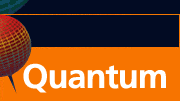CONTACTS
- Coordinator
Adolfo del Campo
-
Quantum Lunch Location:
T-Division Conference Room, TA-3,
Building 123, Room 121
 |


Quantum Institute: Visitor Schedule
The Quantum Lunch is regularly held on Thursdays in the Theoretical Division Conference Room, TA-3, Building 123, Room 121.
The organizing committee includes Malcolm Boshier (P-21), Adolfo del Campo (T-4 & CNLS), Michael Di Rosa (C-PCS), Armin Rahmanisisan (T-4 & CNLS), Changhyun Ryu (P-21) , Nikolai Sinitsyn (T-4), Rolando Somma (T-4), Christopher Ticknor (T-1), and Wojciech Zurek (T-4).
For more information, or to nominate a speaker, contact Adolfo del Campo.
To add your name to the Quantum Lunch email list, contact Ellie Vigil.
Thursday August 29, 2013
12:30 PM - 2:00 PM
Speaker: Peter Kruger (University of Nottingham)
Technical Host: Diego Dalvit
TOPIC: Quantum gases in micro-engineered environments near surfaces
Abstract
Integrating and miniaturizing atom cooling and trapping geometries can be used for efficient and versatile production of quantum degenerate gases in the vicinity of atom chips. This concept has been used successfully in forming a variety of microtraps based on static and oscillating magnetic and electric fields. Applications range from studies of many-body physics of interacting quantum gases confined in custom-engineered geometries to portable field sensors and accelerometers.
Here we will give a few examples illustrating the versatility of atom chips. In particular, we will show how low-dimensional quantum gases can be manipulated in non-trivial geometries, such as double wells, rings and hollow tori. Beyond modifying the trapping potential, control of magnetic fields allows microscopic local and fast temporal tailoring of the interaction strength within the gas, opening the path to a new set of experiments. For example, inhomogeneous interaction strength results in inhomogeneous critical parameters for thermal and quantum phase transitions as well as in inhomogeneous velocity of sound. We will discuss how such inhomogeneities can potentially be used to study proximity effects and phonon production in a constant velocity gas flow undergoing the transition from subsonic to supersonic speed.
The potential of atom chips can be greatly enhanced if the separation between atoms and surfaces is reduced beyond the current limit of typically at least a few microns. We will discuss the benefits of reaching the submicron range and the main obstacles, including trapping potential roughness, fluctuating currents and disruptive surface forces. We will report on experimental progress in tackling these challenges.
|


